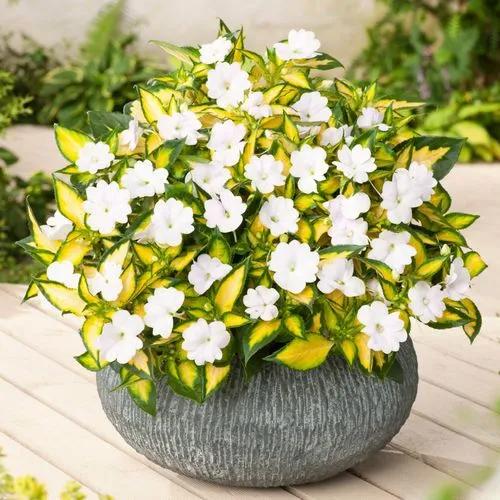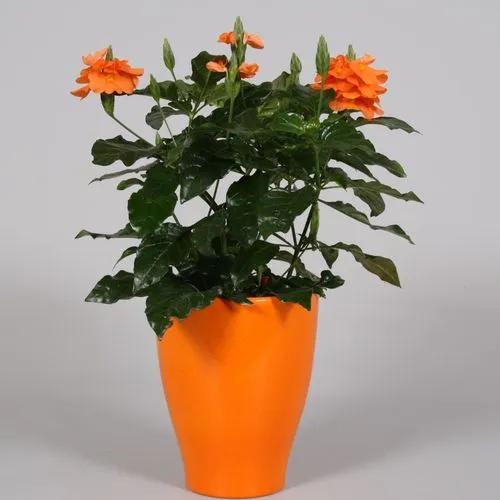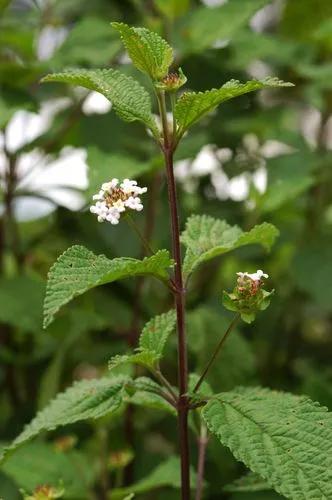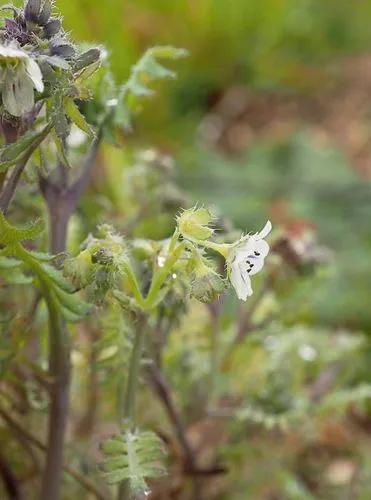This annual or biennial plant is 2-7' tall and unbranched, except where the upper flowering stems occur. The central stem is light green or dull white, glabrous, and round in circumference. There may be a few prickles toward its base. The alternate leaves are up to 12" long and 4" across, becoming smaller as they ascend the stems. They are blue-green, glabrous, and pinnately lobed with a few teeth (however, var. integrata has leaves without lobes). The lobes have a tendency to curve backwards toward the central stem and their tips are pointed. Each leaf has short prickles along its margin and the underside of the central vein. The base of each leaf has a pair of angular lobes that clasp the stem. Both the stems and leaves contain a white milky latex. Panicles of pale yellow flowerheads are produced from the central stem and upper side stems. These panicles are rather long and spreading; they have alternate leaves that are widely spaced and greatly reduced in size. Each flowerhead is about 1/3" (8 mm.) across and about 1/2" in length. It consists of about 20 pale yellow ray florets and several blue-green bracts underneath. The ray florets have truncated tips with 5 small teeth, while the overlapping floral bracts are slender and hairless. The blooming period can occur from mid-summer to fall; an individual plant will remain in bloom for about a month. Each floret produces an achene with a thread-like beak that terminates in a small tuft of white hair. This beak is white and about the same length as the achene, or slightly longer. The achene is grey or light brown, oblong with tapering tips, and somewhat flattened with 3-5 fine nerves on each side. There may be a few teeth near its apex. Distribution of these achenes is by the wind. The root system consists of a taproot that is stout and deep. This plant spreads by reseeding itself.
Prickly Lettuce Care
Lactuca Serriola



What is the plant
How to Care for the Plant

Water

It prefers moist soil.

Sunlight

It cannot grow in the shade.

Soil

Suitable for: light (sandy) and medium (loamy) soils and prefers well-drained soil. Suitable pH: acid, neutral and basic (alkaline) soils.
Ease your plant care routine with PlantIn's personalized system.

Additional

The mature plant is mildly toxic

Popularity

2,270 people already have this plant 386 people have added this plant to their wishlists
What's wrong with your plant?
Related Plants
Discover more plants with the list below
Popular articles






